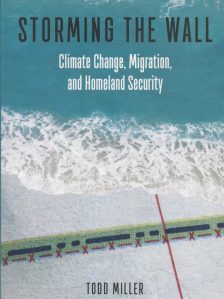UNDER A WHITE SKY: The Nature of the Future by Elizabeth Kolbert (2021)
Under a White Sky is an informative, readable book, which I recommend.
It is a book about people tampering with the environment to counteract damage done by previous tampering with the environment.
These people risk unintended consequences in order to undo previous unintended consequences.
This is unavoidable, Elizabeth Kolbert wrote. There’s no state of unspoiled nature to get back to. Doing nothing is an option, but it is not a good option. The best that can be hoped for is to minimize previous damage.
 Her first example is the ongoing struggle to keep Asian Carp, an invasive species, from jumping from the Mississippi Valley watershed to the Great Lakes Basin.
Her first example is the ongoing struggle to keep Asian Carp, an invasive species, from jumping from the Mississippi Valley watershed to the Great Lakes Basin.
Introduction of Asian Carp (four different species) into the North American environment was actually a suggestion by the great environmentalist Rachel Carson.
She thought the carp would be a good alternative to pesticides to control the growth of aquatic weeds and algae. Aquatic weeds were choking some rivers so badly that not only boats, but swimmers, were unable to get through them.
Asian Carp accomplished their intended purpose. The carp ate up the weeds, but they also ate up and crowded out native fish, mussels and other water life.
On the Illinois River, Asian Carp are nearly two-thirds of estimated fish biomass, Kolbert wrote; on other tributaries, the proportion is even higher.
She wrote that one species can grow to more than 80 pounds, eat half its weight in a day and lay hundreds of thousands of eggs. Another species can grow to 100 pounds.
There is an ongoing struggle to keep the carp out of the Great Lakes Basin, which is connected with the Mississippi watershed by means of the Chicago Sanitary and Ship Canal, which was originally constructed to divert sewage and other pollution away from Chicago beaches.
The canal was originally so polluted that it was toxic to fish. But thanks to the Clean Waters Act and the work of Friends of the Chicago River, it is now possible for the Asian Carp to survive.
The carp are held back by massive fishing, which can yield literally tons of carp in a few days, and by an electrified fence on the Chicago River.
The irony of all this is obvious, but Kolbert does not criticize Rachel Carson or the diggers of the Chicago and Ship Canal. They did the best they could on the basis of what they knew. This is life. This is the human condition.

 There’s a lot to be worried about, people! No sweat — Put all that and more aside for the moment so we can talk climate crisis. An excellent place to start is in
There’s a lot to be worried about, people! No sweat — Put all that and more aside for the moment so we can talk climate crisis. An excellent place to start is in 



















